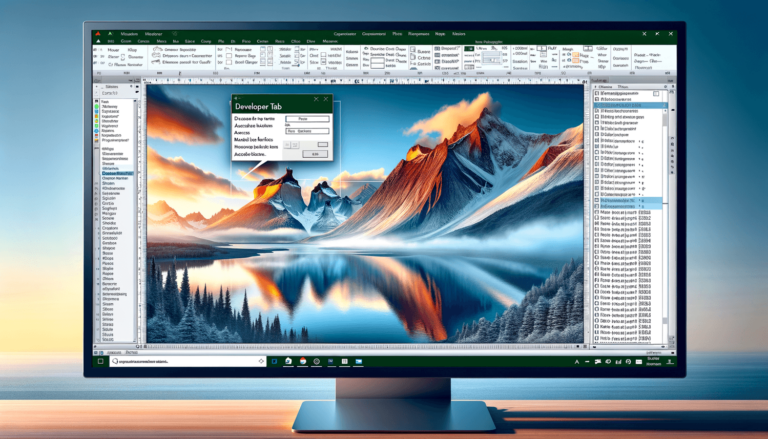

If you are an Excel user, you might be familiar with the Developer tab that lets you access advanced features to handle and automate tasks. However, sometimes you may not see the Developer tab in your Excel ribbon, leaving you to wonder where it is and how to access it. This article aims to provide a straightforward solution to the question of where the Developer tab in Excel is and how to enable it.
If you are an Excel user and you can’t locate the Developer tab, you’re in the right place. The Developer tab offers users access to a set of advanced features that can help automate tasks, customize spreadsheets, and write macros to perform repetitive operations.
The Developer tab is a hidden tab in Excel that is not enabled by default. This tab has various tools and features that allow you to create, edit, and run VBA macros, apply form controls to worksheets, and even run add-ins that extend the capabilities of your Excel workbook. With the Developer tab, you can increase the functionality of Excel and enjoy a more efficient and productive experience using the software.
Once you follow these steps, the Developer tab will be displayed in the Excel ribbon next to the View tab.
By following these steps, you will enable the Developer tab in your Excel ribbon, making it readily available for use.
Enabling the Developer tab in Excel provides a broader range of advanced features that can help automate tasks and customize spreadsheets. We have provided two simple methods to enable the Developer tab. Choose the method that is most convenient for your Excel workflow, and enjoy the benefits of an extended functionality Excel experience!
Here are some commonly asked questions (FAQs) and answers regarding the Developer tab in Excel.
The Developer tab is not enabled by default in Excel. Therefore, if you cannot find the tab in the ribbon, it means it has not been enabled. The section above provides two easy and straightforward ways to enable the tab.
Yes, you can. To remove the Developer tab, follow the same process used to enable it and remove the checkmark from the Developer option to disable it. Then click OK to save the changes.
Some of the functions available on the Developer tab include macro recording, Visual Basic Editor, and add-ins. With these features, you can edit and write code, automate complex tasks, and control and manipulate worksheet elements.
The Developer tab is an essential tool for users who want to take their Excel experience to the next level. With the range of functions and features available, enabling the Developer tab can make your work more efficient and productive. Hopefully, this article has provided valuable information on how to locate and enable the Developer tab in Excel. Have fun exploring all that Excel has to offer with the Developer tab!
Below are some frequently asked questions (FAQs) and answers about the Developer tab in Excel.
The Developer tab offers advanced features that are useful for customizing worksheets, automating tasks, and writing macros. These features can help you save time and work more efficiently in Excel.
Yes, you can. Right-click on the ribbon and select Customize the Ribbon. In the Excel Options dialog box, you can drag and drop the Developer tab to a new location that is more convenient for you.
VBA stands for Visual Basic for Applications. It is a programming language used in Excel and other Microsoft Office applications to develop macros and automate tasks.
To record a macro in Excel, you need to enable the Developer tab, click on Record Macro under the Macros option, give your macro a name, and then perform the actions you want to automate. Stop recording, and your macro will be saved and ready for use.
No, the Developer tab is not available in all versions of Excel. However, it is available in most professional or enterprise versions of Excel, such as Excel Professional Plus, Excel for Office 365, and Excel Standalone.
Explore the world of Microsoft PowerPoint with LearnPowerpoint.io, where we provide tailored tutorials and valuable tips to transform your presentation skills and clarify PowerPoint for enthusiasts and professionals alike.

Your ultimate guide to mastering Microsoft Word! Dive into our extensive collection of tutorials and tips designed to make Word simple and effective for users of all skill levels.

Boost your brand's online presence with Resultris Content Marketing Subscriptions. Enjoy high-quality, on-demand content marketing services to grow your business.
